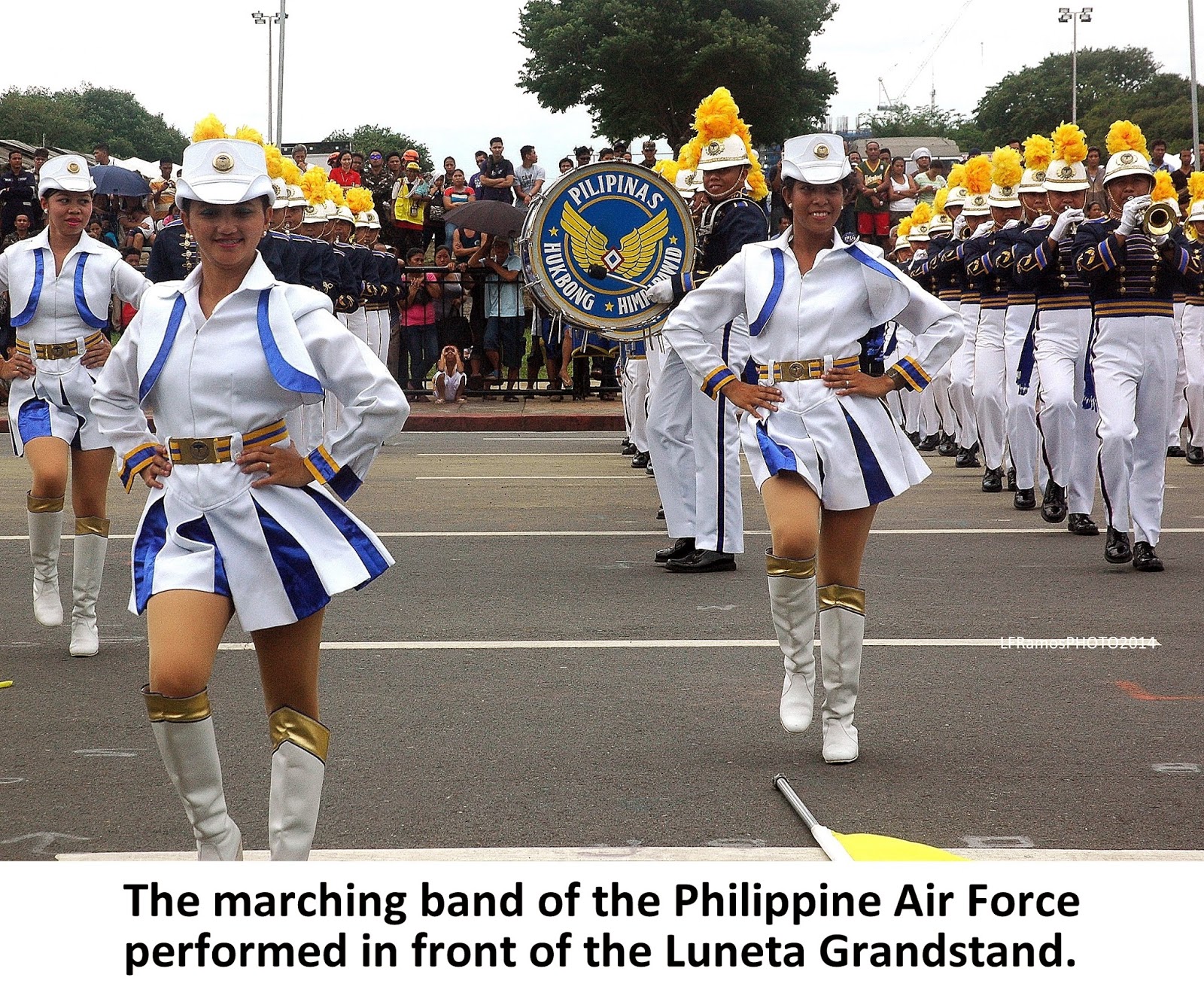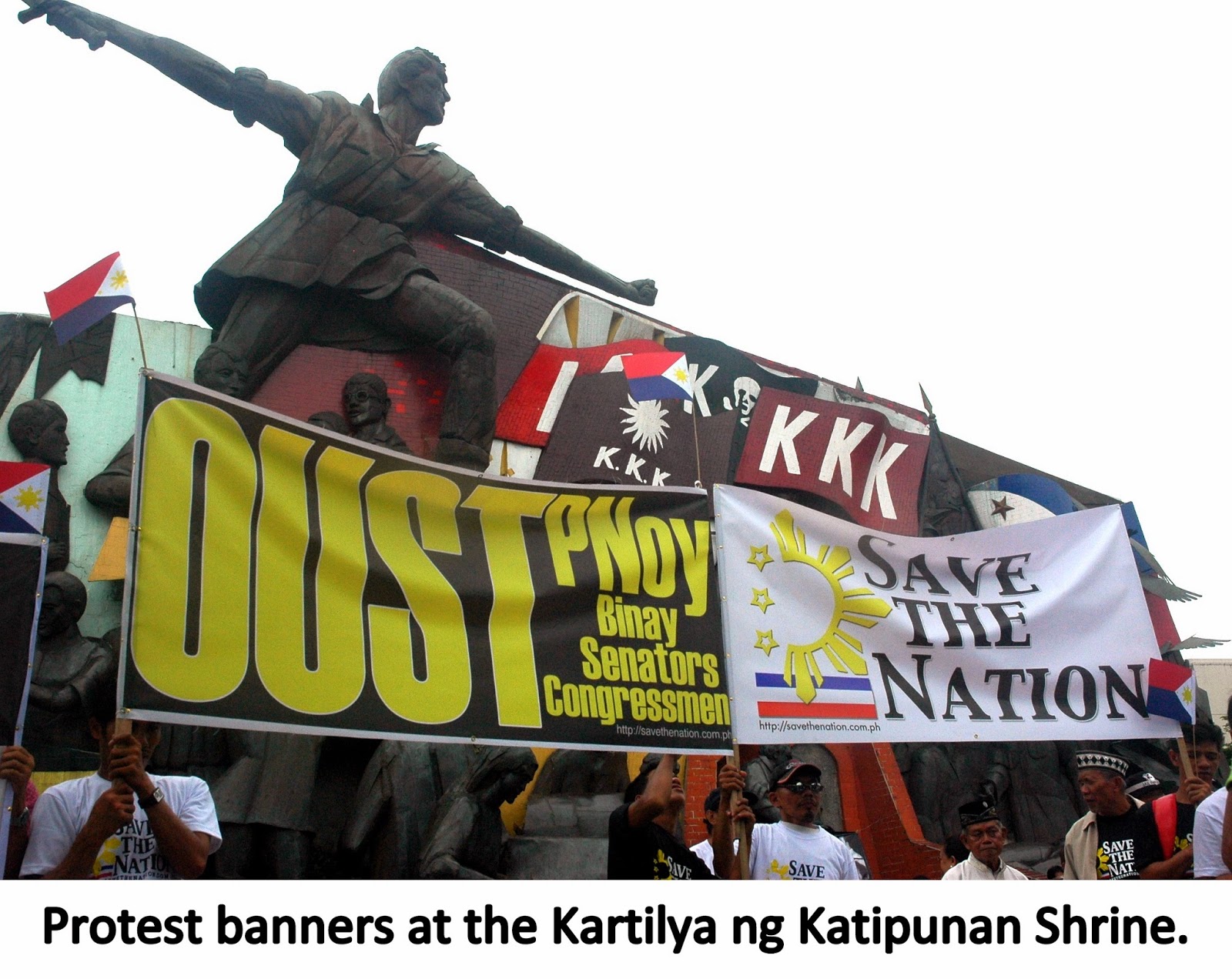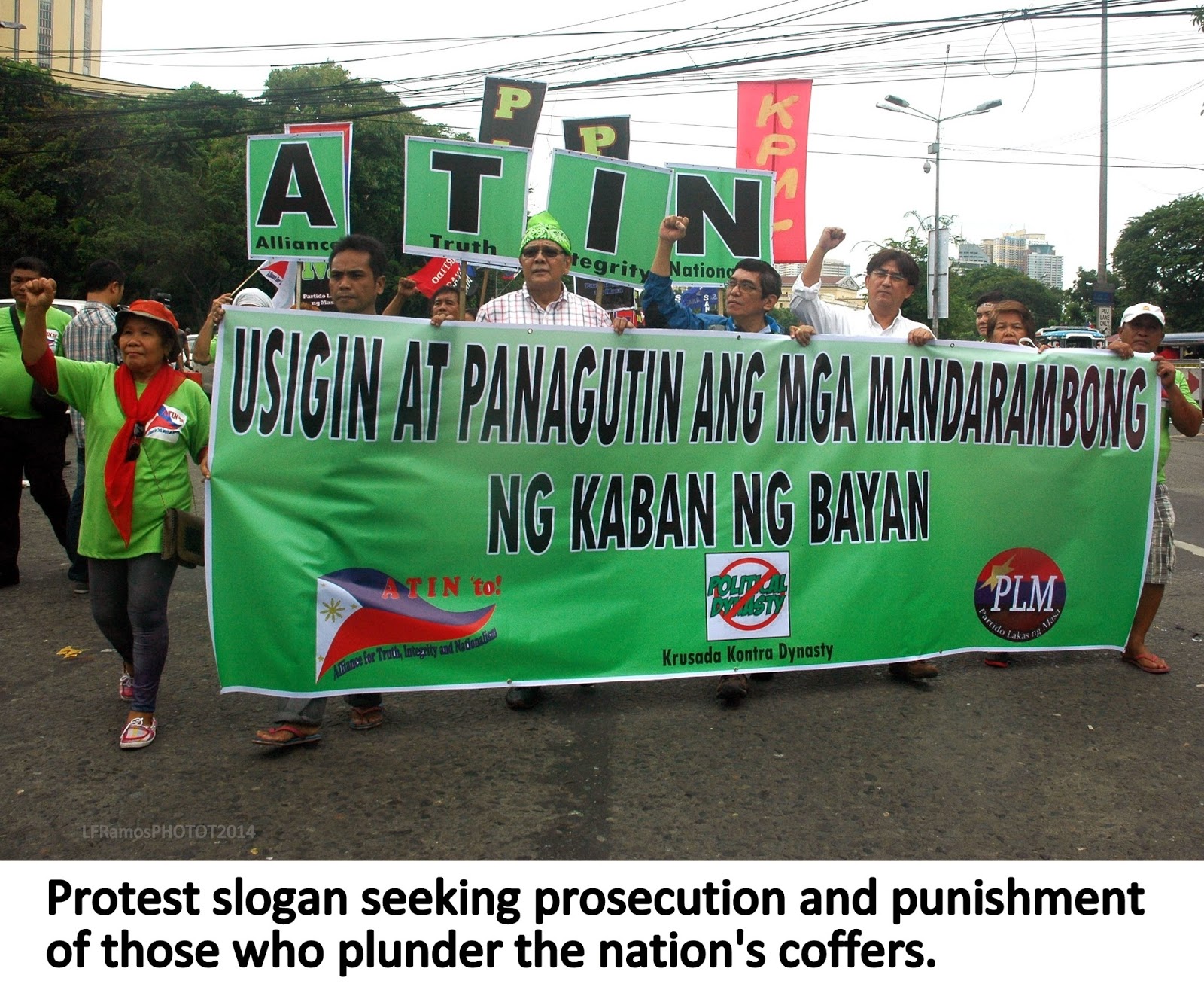There were no grand fireworks to watch on the Twelfth of
June in the home country unlike in the US of A where ‘Filipinos in mainstream
America’ wait for the pyrotechnics to burst and brighten the skies on the night
of the Fourth of July.
There was no parade at the Luneta either just like in the
old days. The last one we remember
watching was that of the centennial celebration in 1998.
Like in the past, government agencies set up booths at
the Burnham Green of the Rizal Park to show their flagship projects and
community services (Mga Pampamahalaang Programa at Serbisyo). The Department of Health, for example,
provided free medical, dental and optical services. Tree seedlings and packets of vegetable seeds
were distributed at the Dept. of Agriculture booth.
The booths of the Armed Forces of the Philippines were a
big hit because it allowed visitors to carry high-powered weapons on display (without
bullets, of course!). Many had their
selfies with real soldiers with camouflage paints on their faces. Marching
bands from various military services like the Philippine Air Force also
provided entertainment at the Luneta Grandstand, and silent drills by units
from the Philippine Coast Guard and Philippine Marines awed spectators there
too.
For those who stayed up to the early evening, they could
have enjoyed for free the 30-minute “Martyrdom of Dr. Jose Rizal: Light and Sound
Presentation”, which dramatizes the national hero’s final hours using eight sculptural
clusters. This presentation is the collective work of National Artists Leandro Locsin,
Lamberto Avellana, Lucio San Pedro and Rolando Tinio. The holiday crowd could also have enjoyed
listening to various musical artists in the Harana sa Rizal Park at different performance
areas around the park.
The Metro and Light Railway Transits provided free rides
7 to 9 in the morning and 5-7 in the evening for people who wanted to enjoy
their holiday in various places in Metro Manila. The Pasig River Ferry Service also offered
free cruises from 6 AM to 6 PM between its operating terminals: Plaza Mexico,
PUP, Guadalupe and Pinagbuhatan.
These were some of the events in this year’s 116th
commemoration of the proclamation of Philippine Independence, which carried the
theme “Pagsunod sa Yapak ng mga Dakilang
Pilipino, Tungo sa Malawakan at Permanenteng Pagbabago.”
 Early in the day
at eight o’clock in the morning, flag-raising and wreath-laying ceremonies were
held simultaneously in seven historical sites all over the country led by high
government officials: Plaza Quince Martires
in Naga City; Rizal National Monument at the Luneta, General Emilio Aguinaldo
Shrine in Kawit, Cavite; Mausoleo delos Veteranos dela Revolucion at the Manila
North Cemetery; Barasoain Church Historical Landmark in Malolos, Bulacan;
Pinaglabanan Memorial Shrine in San Juan City; Bonifacio National Monument in Caloocan City and Pamintuan Mansion in Angeles
City.
Early in the day
at eight o’clock in the morning, flag-raising and wreath-laying ceremonies were
held simultaneously in seven historical sites all over the country led by high
government officials: Plaza Quince Martires
in Naga City; Rizal National Monument at the Luneta, General Emilio Aguinaldo
Shrine in Kawit, Cavite; Mausoleo delos Veteranos dela Revolucion at the Manila
North Cemetery; Barasoain Church Historical Landmark in Malolos, Bulacan;
Pinaglabanan Memorial Shrine in San Juan City; Bonifacio National Monument in Caloocan City and Pamintuan Mansion in Angeles
City.
These rites were replicated in every town and city in the
archipelago. In my hometown San Narciso
in Zambales, for example, the flag rite in front of the municipal building was
followed by the laying of floral wreaths at the monuments of Jose Rizal, Ramon Magsaysay, the Doce Martires
(12 members of the town principalia who were executed in April 1898) and the
Defenders of Bataan and Corregidor.
President Benigno Aquino III, guest of honor at Plaza
Quince Martires rites, extolled the heroism of the fifteen Bicolano martyrs who
were suspected of involvement in the Katipunan.
Eleven of them were executed in Bagumbayan in January 1897 barely a week
after the martyrdom of Jose Rizal, while four died in exile.
 According to reports, some students from the Ateneo de
Naga heckled Aquino while he was talking about the pork barrel scam. “Patalsikin
ang Pork Barrel King! Walang pagbabago sa Pilipinas!,’ were apparently
heard from the students who deemed that the president failed to fulfil his
promise of ending corruption and bringing change to the country. One of them, Emmanuel Pio Mijares, was
arrested.
According to reports, some students from the Ateneo de
Naga heckled Aquino while he was talking about the pork barrel scam. “Patalsikin
ang Pork Barrel King! Walang pagbabago sa Pilipinas!,’ were apparently
heard from the students who deemed that the president failed to fulfil his
promise of ending corruption and bringing change to the country. One of them, Emmanuel Pio Mijares, was
arrested.
Aquino challenged Filipino voters to“[c]hoose candidates
who fight for the interests of the each and every citizen in the face of any
challenge. We do not need a leader who can read a script, dance well or sing
well.” Obviously, he was referring to
Sen. Bong Revilla whose privilege speech included a song number.
At the Rizal
National Monument, Vice President
Jejomar Binay reportedly called for a “timeout” from politics, reminding
Filipinos to remember the patriotism and bravery of those who fought for our
independence.
Chief Justice Maria Lourdes Sereno also touched on the
pork barrel scam cases when she spokeat the General Emilio Aguinaldo Shrine. According to reports, she assured that there
will be no shortcuts in resolving these cases, and that the judiciary will
always be guided by the Constitution and the Rules of Court in their
resolution.
 At the Barasoain Church, where the first Philippine
Republic was inaugurated on 23 September 1898, the guest of honor was MMDA Sec.
Francis Tolentino. He reportedly emphasized
the importance of Malolos Constitution, and also spoke of the threats to our
rightful ownership of some islands in the West Philippine Sea.
At the Barasoain Church, where the first Philippine
Republic was inaugurated on 23 September 1898, the guest of honor was MMDA Sec.
Francis Tolentino. He reportedly emphasized
the importance of Malolos Constitution, and also spoke of the threats to our
rightful ownership of some islands in the West Philippine Sea.
Senate President
Franklin Drilon led the Independence Day rites at the historic Pinaglabanan
Shrine, a memorial to the first battle of the Katipunan that started on 29
August 1898. According to reports, he appealed to the people to keep their faith in
their democratic institutions despite the pork barrel scam controversies.
We witnessed the commemoration program at the Bonifacio
National Monument. It was the Caloocan
City Mayor who delivered the keynote speech. Theatrical, dance and musical
presentations were performed by government employees and public school
teachers.
It is presumed that similar flag-raising and wreath-laying ceremonies were
conducted at the Pamintuan Mansion and the Mausoleo de los Veteranos de la Revolucion.
 For historical
appreciation, Aguinaldo moved the seat of the government from Kawit, Cavite to Pampanga
during the war against the Americans. He waved the Philippine flag from the
second-floor balcony of the Pamintuan Mansion on 12 June 1899, the first
anniversary of Philippine independence.
On the other hand, the Mausoleo was built by the Veteranos de la
Revolucion headed by Aguinaldo and inaugurated on 30 May 1920 as a pantheon of
the heroes of the revolution against Spain.
For historical
appreciation, Aguinaldo moved the seat of the government from Kawit, Cavite to Pampanga
during the war against the Americans. He waved the Philippine flag from the
second-floor balcony of the Pamintuan Mansion on 12 June 1899, the first
anniversary of Philippine independence.
On the other hand, the Mausoleo was built by the Veteranos de la
Revolucion headed by Aguinaldo and inaugurated on 30 May 1920 as a pantheon of
the heroes of the revolution against Spain.
The noise of the 116th anniversary celebration
of our independence came from the rallies not only in Metro Manila but also in some cities in the
country, a continuing reverberation of the Million People March to Scrap Pork
Barrel on 26 August last year.
The festive colors came from the protest streamers and
banners, and from the props such as masks and papier mache pigs of various
configurations like the big one with a crown.
One reporter observed that “[a] funny thing happened to
marchers protesting against the pork barrel in all forms. Their target turned
out to be President Aquino.” This is
evident in the ‘Pork Barrel King’ title given to him.
We were at the Kartilya ng Katipunan Shrine (or Bonifacio
Shrine) near the Manila City Hall for the 6.12.14 Protest Against Corruption in
the afternoon. This was put together by
6.12.14 Protest Coalition of various organizations comprising the Scrap Pork
Network, Kilusang KonTRAPOrk, and Freedom from Debt Coalition. Hashtags used for social media communications
were #OUCHPinoy, #ScrapPork and #JailALL.
Various sectoral representatives were given the chance to
denounce the plunder of government funds through the PDAF or the popular pork
barrel. There was a collective call for
the Aquino administration to prosecute the people behind the pork barrel scam,
those linked to the controversies including the allies of the president. “All those involved should be prosecuted and
not just a few,” Auxiliary Bishop Broderick Pabillo emphasized.
Entertainment numbers were provided by popular singers
like veteran activist Heber Bartolome and Jograd de la Torre with their
nationalistic and protest songs, and rocker Eli Buendia of Eraserheads fame.
 At Liwasang Bonifacio, a “Rally for Accountability” was led
by the #Abolishpork Movement. This was joined by militant, civil and religious
groups like the Volunteers Against Crime
and Corruption (VACC), Artista Kontra
Korapsyon (AKSYON), University of the Philippines (UP) Faculty versus Pork,
Youth ACT Now!, Babae Laban sa Katiwalian (BABALA), and Bagong Alyansang Makabayan (BAYAN).
At Liwasang Bonifacio, a “Rally for Accountability” was led
by the #Abolishpork Movement. This was joined by militant, civil and religious
groups like the Volunteers Against Crime
and Corruption (VACC), Artista Kontra
Korapsyon (AKSYON), University of the Philippines (UP) Faculty versus Pork,
Youth ACT Now!, Babae Laban sa Katiwalian (BABALA), and Bagong Alyansang Makabayan (BAYAN).
Reports in the social media showed that this was preceded
by a march to the US Embassy in Manila and a program at Kalaw Avenue where some
protesters dressed up like Katipuneros and Katipuneras and carried make-believe
bolos and rifles.
Later in the afternoon, the protesters marched to
Mendiola with torches.
Present at both the Kartilya and Liwasang Bonifacio
rallies was Mae Paner, more popularly known as Juana Change, who had porky
faces adorning the front of her kimona and all around the hem of her saya.
The cheer up chants were variations on the theme of
accountability. At the Kartilya
Shrine: Sumagot, Managot, Kundi Lagot! Ouch PiNoy! At Liwasang Bonifacio-Mendiola: “Lahat
ng Sangkot, Dapat Managot”


























